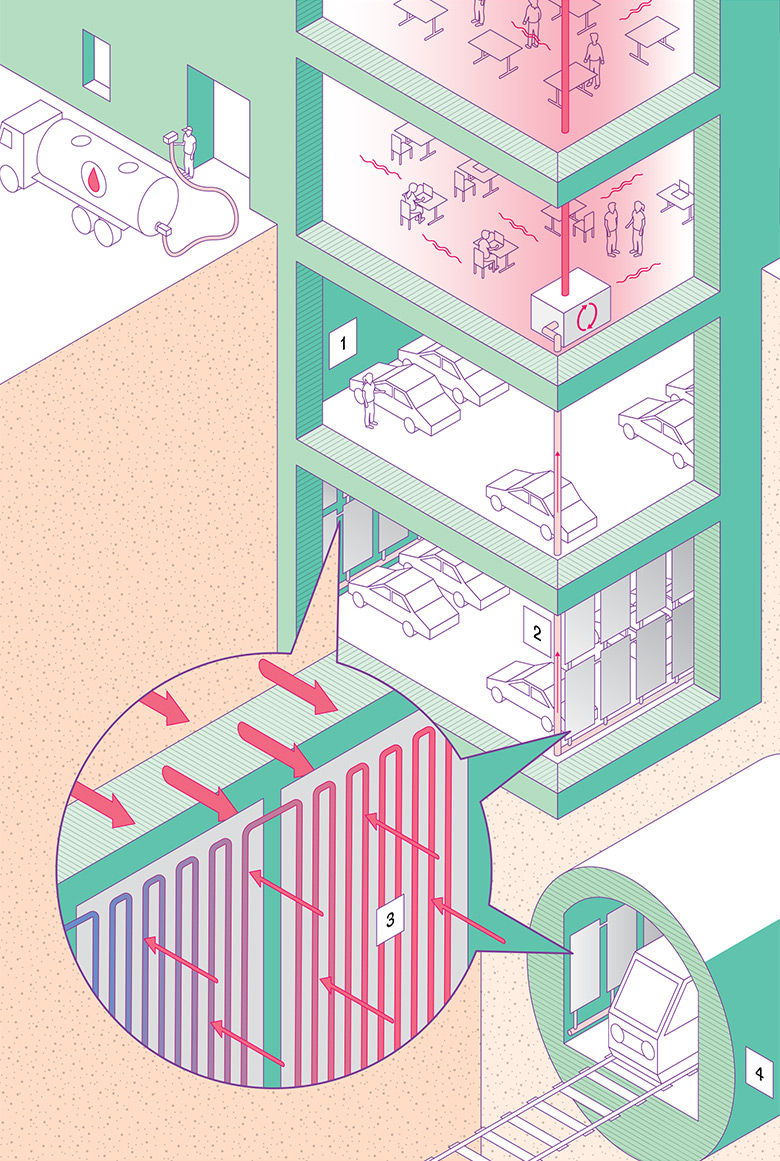HOW IT WORKS
Renewable energy under our feet
Geothermal panels exploit the constant temperature of underground spaces. This innovative solution from EPFL can heat or cool buildings in a sustainable way.
Geothermal panels exploit the constant temperature of underground spaces. This innovative solution from EPFL can heat or cool buildings in a sustainable way.
For more information, move your mouse over the numbers or click on them.

Illustration: ikonaut
3 — The method
The solution is thin aluminium panels, installed on the walls of underground spaces. Inside the panels is a fluid consisting mainly of water, circulating through pipes. As it passes through, the fluid exchanges heat with the environment and then feeds a heat pump, which can heat or cool a building on its own or in combination with an existing heating system.
The panels exchange heat with both the wall to which they are attached (80 percent) and the ambient air (20 percent). Full-scale testing in an underground car park was necessary to arrive at a solution that worked. The challenge was to identify which shape panels absorbed the most heat from the wall without creating undue resistance to the fluid. Both the panels and the fluid had to be optimised to achieve a temperature difference between the inlet and the outlet that was sufficiently large to be compatible with existing heating devices (e.g., heat pumps). To bear this out, heat flows in the underground car park were simulated over a period of 50 years.
2 — The idea
In 2019 scientists from EPFL created the spin-off Enerdrape and began developing a solution. Their idea was to reproduce the functioning of energy geostructures, i.e., the heat-exchanger tubes that equip new buildings, and adapt them to existing underground spaces to take advantage of near-surface geothermal energy.
1 — The finding
Many spaces exist under our feet: underground train stations, car parks, tunnels. If their stable temperatures could be exploited through geothermal energy, fossil fuel consumption could be reduced.
